Growing nasturtium seedlings from seeds: planting and care rules
There is a special charm in such a beautiful flower as nasturtium. After all, it is amazingly good not only for its magnificent bright colors, but also for their spicy taste. It is no coincidence that the plant touches the strings of the soul and the flower grower, and the summer resident, and the culinary specialist and is called Indian or Capuchin watercress, a colored salad. In addition, the indisputable advantage of growing nasturtium in a personal plot is the fact that this annual can bloom from the beginning of summer (from June) to the very frost. You can grow nasturtium by first planting it on seedlings or immediately sowing it in open ground. Read about how to do this correctly, as well as how to take care of the plant further, in our article.
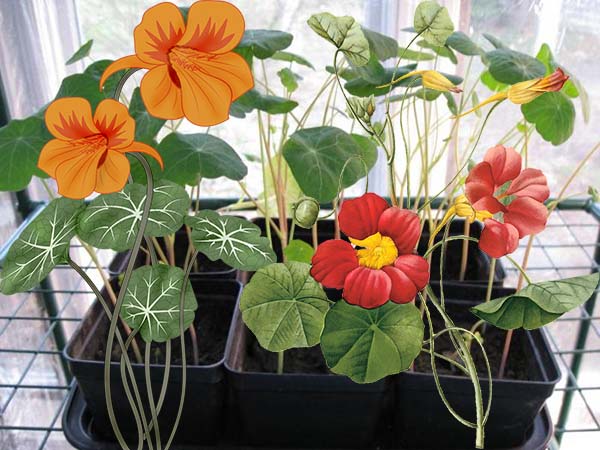
Content
When and how to sow to sow nasturtium on seedlings and in open ground
As already mentioned, nasturtium can be sown both directly with seeds in the ground, and for seedlings. Whoever likes it more.
If you don't want to bother with seedlings, then direct sowing of seeds in open ground can be carried out in late May-early June or even earlier, but it is desirable that the threat of return frosts passes.
If you are used to growing through seedlings, then sowing seeds in cups can be carried out in the second half of April and early May.
Note! Through seedlings, nasturtium, of course, will grow and bloom a little faster, but then the plants will become equal.
Growing nasturtium through seedlings
For the successful cultivation of annuals through seedlings, it is necessary to correctly navigate with the planting container, soil, carefully prepare the seeds and competently carry out direct sowing.
The choice of planting capacity and soil
For growing nasturtium in seedlings, as a rule, individual containers are immediately used, for example, pots or cups (as an option, you can sow in cassettes).
The soil for growing seedlings should be loose and fertile.
But in no case should you plant seedlings in very fertile soil.
Seed preparation
To speed up sprouting, it is recommended to soak nasturtium seeds in warm (about 40 degrees) water overnight or even for a day (the water will have to be changed once), for example, in gauze (in cotton pads), in a glass or saucer with a lid on (so that moisture did not evaporate).
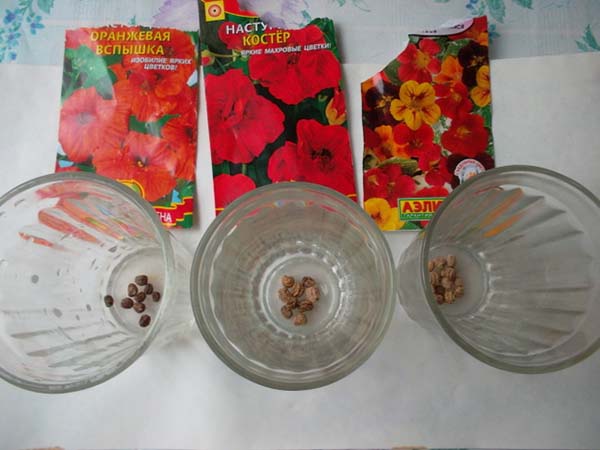
You can sow without soaking, but it will take longer to germinate.
Direct sowing
Step-by-step instructions for sowing nasturtium seedlings:
- Prepare planting containers.
- Fill them with nutritious soil.
- Moisten thoroughly.
- As a rule, several seeds are placed in one pot (glass) (2-4 pieces)
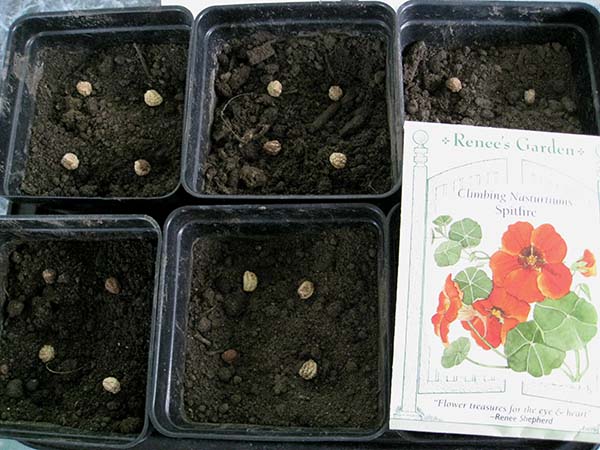
- Next, they need to be buried 1.5-2 cm into the ground.
- Cover with soil.
- Moisten again.
- Cover with foil or glass to create a greenhouse effect (to keep it moist and warm).
- Place in a dark and even not necessarily very warm place (germination temperature + 16-18 degrees).
Seedling care after sowing
After sowing, the soil should be kept constantly moist, otherwise the seeds will sprout for a very long time (for this, the containers are covered with a film).
As a rule, the first shoots appear in 10-14 days.
Next, you will need to put the seedlings on a light windowsill and water as the soil dries.
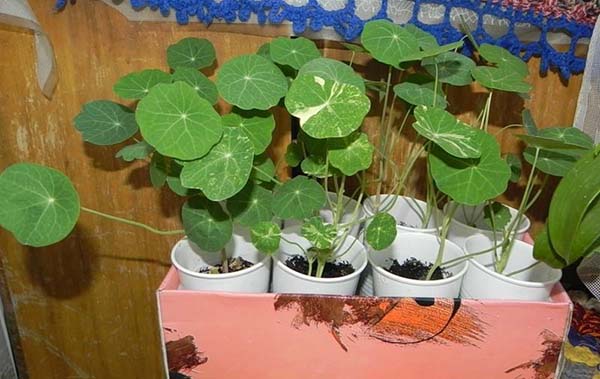
Planting seedlings in open ground
Planting seedlings of nasturtium is carried out at the same time as sowing seeds in open ground, i.e. approximately in the second half of May-early June, when the threat of return frosts has passed. By this time, the seedlings have already grown strong enough, and they will already have more than 2-3 true leaves.
Plants are planted in prepared holes without disturbing the earthen coma (for this, the seedlings must be watered abundantly the day before planting), and then watered and mulched.
Video: growing through seedlings and caring for nasturtium in the open field
Sowing nasturtium directly into open ground
Sowing nasturtium seeds directly into open ground is carried out similarly to planting seedlings (planting depth - 1.5-2 cm), including pre-preparing the seeds (soak them overnight or better for a day in warm water).
Note! The optimal distance between plants is 15-40 centimeters (depending on the size of the variety), but sowing directly into the ground is better thicker (suddenly it will not rise everywhere), in order to thin out or plant later.
After watering, it is advisable to cover the crops with a film so that moisture in the soil remains longer - this way the seeds will sprout faster.
Planting site: lighting and soil
When it comes to garden space, nasturtium is a heat-loving plant that needs open areas with plenty of sunlight to grow.
By the way! If all the sunny places are occupied, then you can plant in partial shade, but not in the shade.The fact is that due to a lack of sun, the plant will stretch and bloom poorly.
- Curly nasturtium is ideal for vertical gardening, namely for decorating any supports, arbors, arches, hedges,
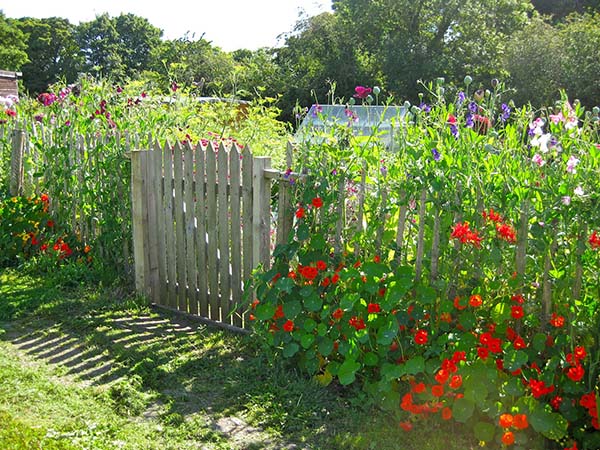
Including you can grow it in containers, on balconies and loggias.
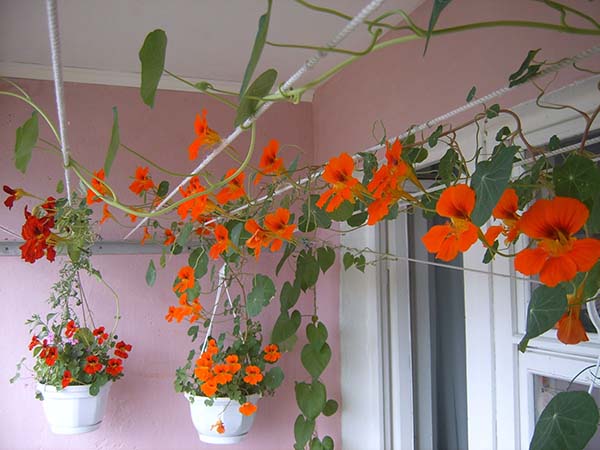
- But undersized varieties are more often planted on ridges, borders and flower beds.
As for the soil, nasturtium prefers moderately or minimally fertile (on a very fertile, nitrogen-rich, it will fatten: drive and grow leaves to the detriment of flowers), but be sure light, loose, well-drained soil.
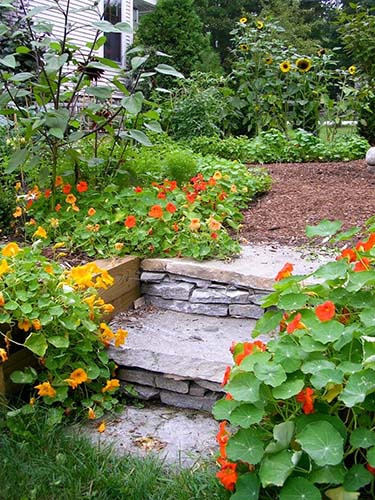
Outdoor nasturtium care
Nasturtium can be called an unpretentious annual in care, because caring for the plant is quite simple: you just need to water it in a timely manner (especially in the heat), loosen it, weed it from weeds and feed it a couple of times.
Watering
The plant especially needs high humidity during the growth period, and after the beginning of flowering - only as the soil dries up.
Nasturtium does not like waterlogging of the soil.
Top dressing
It makes sense to feed nasturtium only before flowering and at the very beginning, using complex mineral fertilizers for flowering plants (with a minimum nitrogen content), such as Fertik, AVA, Agricola.
The plant does not tolerate fresh manure.
Note! With an excess of nitrogen fertilizers (including organic ones), the plant will begin to fatten - it will actively increase its green mass, but the flowering will be very weak (the leaves will be huge, and the flowers will be small).
Collection of young seed pods for capers
Advice! Quickly break off the seed ovaries so that the plant does not waste extra energy on it, which is why it blooms less abundantly. Plus, these young (unripe) green seed pods can be pickled (similar to cucumbers) to make delicious capers.
However, flowers are also edible and even very useful... They can be used to decorate salads.
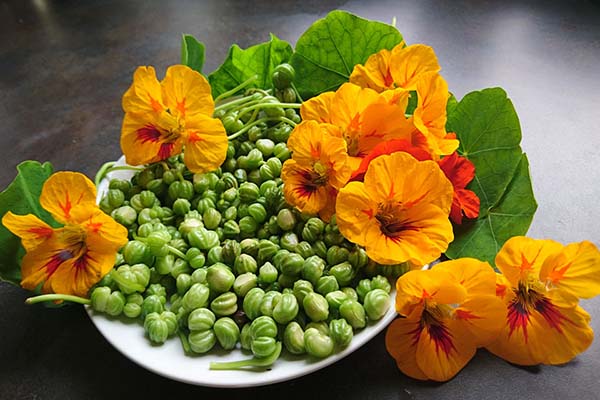
Popular varieties of nasturtium
Everyone is used to the fact that nasturtium is undersized plant with orange-red flowers, for example, varieties "Symphony of Colors", "Bright Flowerbed".
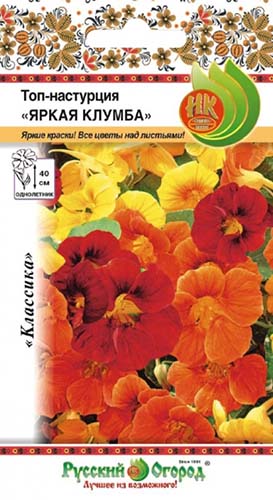
But there are many other more interesting varieties (especially curly - tall) nasturtium:
- from white flowers - varieties "Snow Queen", "Bigfoot".
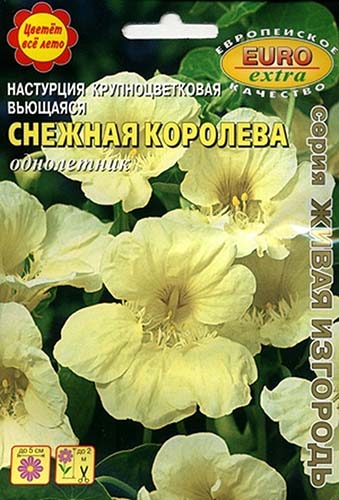
- from red flowers - grade "Purple Gloss", "Purple Legion", "Scarlett O'Hara", "Anyutka", "Extravaganza".
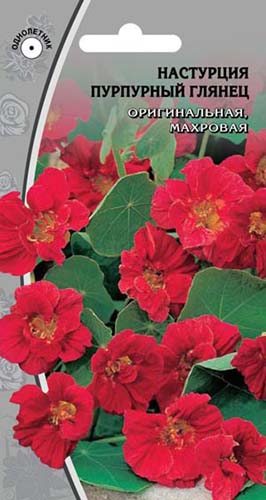
- mixes with variegated leaves different colors type "Zebra".

- mix "Starry Night".
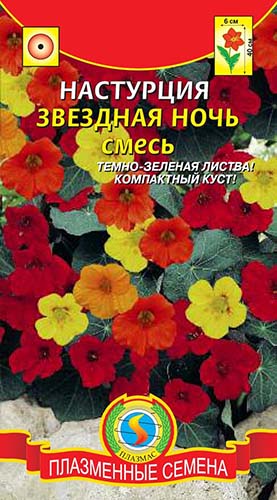
- mixture "Day and night".
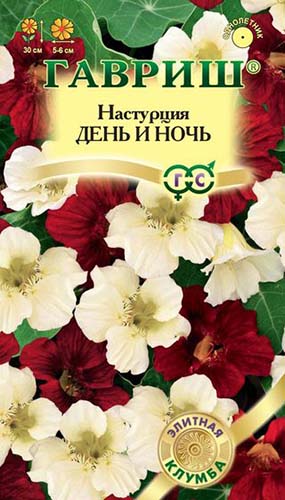
- Mixture "Tutti-Frutti".
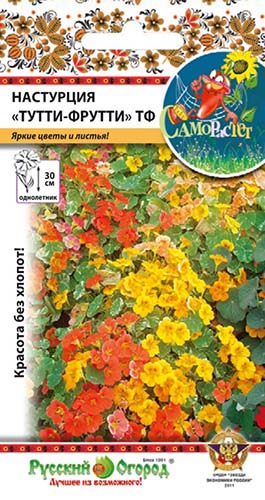
When choosing a variety, pay attention to the height of the plants!
Particularly attention-grabbinglong-leaved or curly nasturtium, which can be grown on a support (veranda, gazebo, arch).
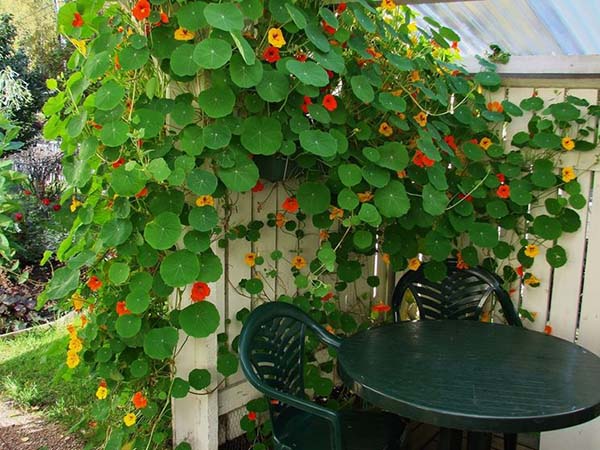
Worth knowing! The plant cannot curl on its own, so you will have to help it first by placing a support and pulling the twine.
Or you can not make any supports and leave it curling on the ground, so to speak, in the role of a ground cover plant (it will grow with a carpet).
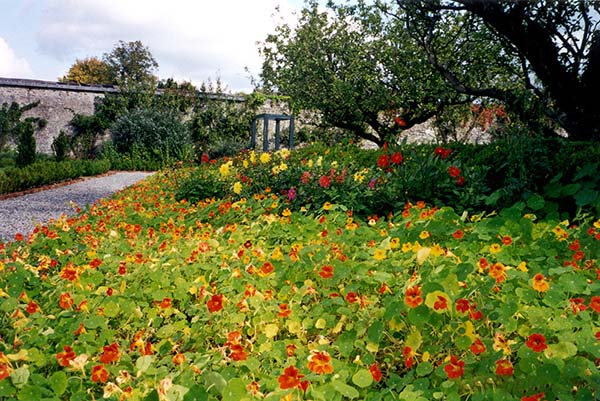
A very unusual and different flower shape is nasturtium Foreign, for example, varieties "Canary Liana".
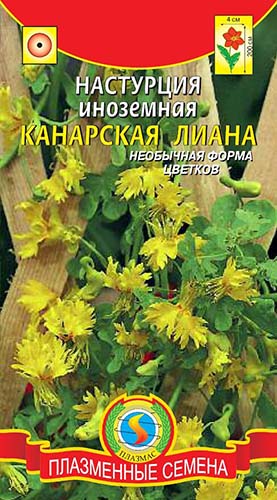
Important! Foreign nasturtium must be grown through seedlings.
To achieve a luxurious flowering of wonderful nasturtium, it is necessary to take responsibility for the choice of growing method (seeds or seedlings), choose the appropriate place in the garden plot, suitable soil and properly care for the plant in the open field.
Video: all about varieties and agricultural techniques for growing nasturtium

